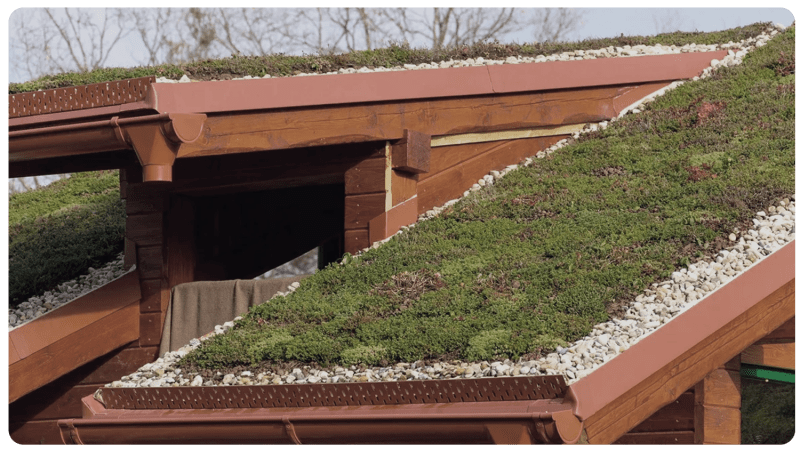
An introduction to living roofs
- Read time: 4.5 minutes
- Date: 06 Jun 2023
- Living Roof
Living roofs or green roofs allow plants, trees, and other foliage to grow on the roof of a building. Traditionally, on a roof garden, plants are grown in containers, whereas a living roof is specially designed to retain the growing material – but more recently, living roofs that have been designed to be used by people, are also being referred to as roof gardens.

What are the benefits of a living roof?
Living roofs can have significant benefits for both the building occupant and the environment, including:
Creating an aesthetically pleasing view for surrounding buildings
Improving energy efficiency by increasing thermal mass so less energy is needed to heat or cool the building
Increasing acoustic performance, contributing to a quieter building
Reducing rainwater run-off by between 40 and 81% depending on the type of roof, helping to reduce the risk of flooding
Reducing the heat island effect (where heat reflects off concrete and glass increasing the temperature in cities and urban areas) through the evaporation of water from soil and foliage
Increasing biodiversity by creating or replacing habitats for wildlife – this can be used to meet offsetting and net gain biodiversity targets
Improving air and water quality
Introducing urban agriculture
Creating a leisure space if there is public access
Increasing the longevity of the roofing membrane
The sustainability benefits are so widely recognised that some councils and local authorities require new developments to incorporate living roofs into their plans. Living roofs can also contribute to BREEAM and LEED credits.
What are the differences between the various types of green roof and how do they compare?
There are several different types of green roof including:
Extensive green roofs have shallow substrates (growing medium) of between 80mm and 150mm deep, and are used to grow sedums, wildflowers and other small succulents. This means they are lightweight and require minimal maintenance. They are not designed for public access. Extensive green roofs may also be referred to as sedum only, biodiverse or wild and meadow flower roofs depending on the planting scheme used.

Intensive green roofs look like and may be used as a roof garden. They have deeper substrates of between 150mm and 1,000mm deep, so can support a wider range of vegetation including turf, shrubs and trees, as well as paving. Some can even support livestock, as is the case with this roof we worked on for The Flower Bowl entertainment centre. This means they require regular maintenance.
Semi-intensive green roofs combine elements of both extensive and intensive green roofs. This would usually be in order to encourage biodiversity using a greater range of plants, shrubs, etc.
Blue / green roofs store rainwater as part of a SuDS system to reduce run-off. The green roof is installed over the top of the water storage tanks. They are often used in areas where there is a risk of flooding.
For further information, read our module about blue roofs
Bio-solar roofs combine a living roof with photovoltaic solar panels.





